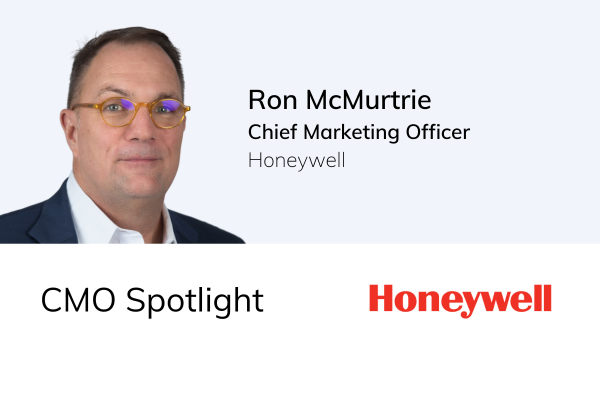A 2025 Check-Up on the Health + Wellness Industry
In the last five years, the health and wellness industry has experienced a significant transformation, from personalized nutrition, to the rise of telehealth, to a growing emphasis on marketing transparency. The consumer is becoming more integral in everyday decisions across all industries.
What has changed and what is continuing to take priority in today’s health and wellness sector?
1. Clarity + Personalization
Transparency is no longer optional. As Kelly Deen, Chief Commercial Officer at kencko, shared in an interview, customers now expect brands to clearly explain what’s in their products, where ingredients come from, and how things are made. If a brand can’t confidently answer those questions, they risk losing trust.
With AI embedded across nearly every aspect of health marketing, building consumer trust is more critical than ever.
This goes hand-in-hand with the growing demand for personalization. One-size-fits-all solutions are fading. Instead, consumers want supplements, nutrition, and fitness programs tailored to their individual needs. Wellness brands that prioritize both personalization and transparency are already gaining ground.
Read more in “A Check-up on the Health + Wellness Industry.”
2. Mental Health is a Priority
In 2025, holistic health has taken center stage. That means physical wellness is only part of the equation—mental and emotional well-being are essential. According to Jamie Eslinger, former SVP of Marketing at The Little Gym & Snapology, families are especially prioritizing preventive health and investing in services that support the whole person, from kids to parents.
Alternative therapies, integrative nutrition, and emotional wellness platforms are seeing more traction than ever. The brands that listen to emotional needs (and build care into their messaging) are breaking through.
3. Technology Meets Accessibility
AI, smart wearables, and telehealth continue to reshape how consumers manage their health. And that’s a good thing, especially when these tools help people stay proactive. But there’s one major concern: accessibility.
A study by Cornell University pointed out that not all digital health solutions are inclusive, especially for individuals with disabilities. As healthcare becomes more tech-enabled, brands must design tools and platforms with accessibility in mind or risk leaving entire segments behind.
4. New Rules Are Rewriting Health Marketing
With growing scrutiny over how pharmaceutical and wellness brands advertise, marketers are navigating an evolving regulatory landscape. Amid rising concerns around public trust, Adweek recently reported that discussions about banning pharmaceutical TV ads are gaining momentum in Congress.
That means marketing teams will need to shift focus. Expect to see brands investing in educational content, long-term engagement, and community-building to earn trust.
From personalized nutrition to inclusive tech and emotionally intelligent marketing, the health and wellness industry is evolving rapidly. If you're a brand in this space, the way forward is clear:
Build trust through transparency
Embrace holistic care
Stay human—even as you go digital
Prioritize accessibility and equity
Stay ahead of regulatory changes
At Setup, we help brands in health, wellness, and beyond connect with the right agency partners to bring these strategies to life. If you're looking to sharpen your marketing in this space, get in touch with our team here.
Marketers are grappling with how to make their strategy feel more impactful and human in 2025, but in the nonprofit world, that challenge comes with the added pressure of limited budgets and expansive missions. For Lynn Godfrey, Chief Experience Officer at Blood Cancer United, the solution lies in staying intentional, deeply segmenting audiences, and adapting quickly in a constantly evolving landscape.
Private wealth marketing is built on personal relationships, which can make the advancements in technology more and more challenging. In an industry where discretion and relationships reign supreme, marketers must learn how to integrate data, automation, and innovation without losing trust.
To explore this balance, we spoke with Cathy McLagan, Managing Director of Growth Enablement at CIBC Private Wealth US.
“Data-driven” marketing is about proactively leveraging insights to make strategic decisions. But what defines a truly data-driven media approach?
If your media strategy feels tangled and unclear, you’re not alone. Here’s how smart brands are simplifying the chaos and getting real results.
Whether you’re managing campaigns for a national brand, a franchise QSR, or a B2B tech company, the challenge is the same: how do you build smarter media strategies that actually tie back to real business outcomes? We spoke with top experts from Sagepath, Goodway Group, and Look Listen to dig into what’s working, what’s changing, and where media performance and analytics are headed next.
Retail marketing is entering a new era where value, trust, and operational excellence matter more than volume, visibility, and trend-chasing. As shopper expectations evolve, smart retail marketers are embracing personalization, AI, and brand positioning that aligns with customer values. We spoke with Kaylin Staub, the Chief Marketing Officer at SupplyHouse, and a leader we believe to be leading the pack in these efforts. Check out her interview.
In the midst of change and new tech, Marti Walsh, VP of Customer Experience and Marketing at Kimberly-Clark Professional, brings us back to what really matters: showing up with purpose. In this conversation with Setup, she shares how her team builds trust through consistent omnichannel messaging, thoughtful use of AI, and a commitment to authenticity that connects with real people.
Media is about delivering results that are meaningful. Your strategy should be about more than impressions. But with siloed data and rising expectations, it's hard to prioritize meaning under pressure to perform.
That’s why we’ve brought together three powerful blogs filled with insights from industry experts at the top of their media game to help you rethink your media planning, simplify execution, and activate smarter strategies that drive growth.
“Data-driven” marketing is about proactively leveraging insights to make strategic decisions. But what defines a truly data-driven media approach?
Creating a marketing budget isn’t just a financial exercise; it’s a strategic act. It’s your roadmap for growth, your guardrail against wasted effort, and, when done well, your strongest case for internal alignment and external results.
But while most marketers know how much they wish they could spend, far fewer know how much they should. So, where do you begin?
Marketers today juggle numerous platforms, overwhelming data, and competing internal demands, creating a complex media landscape that clouds performance clarity. What drives this complexity, and how can brands effectively navigate it?
Today’s marketers face immense pressure to justify media spend and measure tangible impact. But fragmented data, inadequate tracking, and unclear KPIs often cloud visibility. How can brands build smarter strategies that truly connect media spend to real business outcomes?
Every few years, we revisit the Health and Wellness space to track major shifts. Since the pandemic, the industry has made significant strides to meet evolving consumer demands and expectations.
We spoke with Mark Yosick, Senior Marketing Director, Surgical at MIMEDX, about his experience in the space, the challenges he’s faced, and the trends he sees shaping the future.
In the last five years, the health and wellness industry has experienced a significant transformation, from personalized nutrition, to the rise of telehealth, to a growing emphasis on marketing transparency. The consumer is becoming more integral in everyday decisions across all industries.
What has changed and what is continuing to take priority in today’s health and wellness sector?
Setup CEO + Founder, Joe Koufman, sat down with Navin Sharma, Chief Marketing Officer at Church’s Texas Chicken, to talk about the importance of hard work, resilience, and why simply getting started is often the most imperative step to success.
When it comes to purchasing, today’s consumers want more than just a product–they want something to believe in. The rise of purpose-driven brands, founder visibility, AI-powered personalization (with boundaries), and culturally rooted storytelling are reshaping how beverage companies connect with their audiences.
BLK & Bold, a coffee brand built on community, culture, and impact, is a leader in this movement. In this exclusive interview with Co-Founder Rod Johnson, Johnson shares how they’re redefining what it means to market in the beverage space.
In a conversation with Nate Bigger, Founder + CEO of MONPURE and the leader behind the brand’s marketing strategy, we heard firsthand how the company is navigating the beauty landscape with authenticity, science-led storytelling, and a deep understanding of the emotional side of self-care.
Setup CEO + Founder, Joe Koufman, spoke with Joshua Sims Sr., the Chief Marketing Officer at Noble Food and Pursuits about how he prioritizes relationships and embodies the humanization of marketing.
The financial services industry has never been known for moving fast—but in 2025, the pressure is on. With artificial intelligence (AI) redefining customer engagement, fintech innovations raising consumer expectations, and tighter regulations around data privacy, marketing leaders in finance are rethinking how they show up, connect, and grow.
With agentic AI systems driving automation, fintech innovations setting new standards, and post-pandemic digital acceleration cementing permanent shifts in behavior, the financial marketing landscape is evolving at a rapid speed. So, how can financial brands stay ahead?
Is AI stripping consumers of excitement? Is there unconscious bias in AI? How can marketers stand out while using the same tech stack?
In conversations with marketing leaders in the high-tech and innovation sector, adopting AI is not the challenge. The future belongs to teams who adapt to AI while investing in human elements like curiosity, connection, and inspiration.
Great marketers never stop learning—so how are you investing in your team’s growth? From leadership coaching to AI-driven innovation, this blog explores the most effective professional development strategies to keep your marketing team sharp, engaged, and ahead of the curve.
Setup CEO + Founder, Joe Koufman, spoke with Sergio Pérez, the Chief Marketing Officer at Emmy Squared, a pizza restaurant founded in 2014 with 10 locations across the East coast. Sergio Pérez champions curiosity, authenticity, and the underdog spirit.
Choosing the right marketing Agency in 2025 is about more than finding a vendor—it’s about building a partnership that can adapt to your needs, communicate effectively, and drive long-term results. Start with clear goals, leverage trusted referrals, and prioritize compatibility and communication. Remember, the right Agency won’t just execute campaigns—they’ll act as an extension of your team, helping your Brand navigate challenges and seize opportunities.
Setup CEO + Founder, Joe Koufman, spoke with Ben Boyd, the Chief Communications Officer at Chobani, about designing your own career path, the importance of empathy and understanding as a leader, and more.
The fluctuating economy leading to job and spending uncertainty, shifts consumer preferences in ways that significantly impact marketing strategies - especially in Travel and Hospitality. To stay ahead, Brands need to rethink how to engage with customers to maintain their loyalty and their business. Here are some strategies to keep in mind as marketers prepare for the holiday season and approach 2025.
Setup CEO + Founder, Joe Koufman, spoke with Trish Nettleship, the Chief Marketing Officer at NCR Voyix, about understanding your “why,” the power of relationships and listening, passion, and more.
People overall are not feeling heard or understood. When that happens, team members don’t feel valued, and they usually leave a place of employment or end a partnership. We provide suggestions to improve culture, collaboration, and communication for marketing leaders, including our Team Building service.






























Over the past year, we’ve watched the following patterns emerge across seemingly unrelated sectors: rising consumer expectations, demand for authenticity, growing complexity, and the tension between automation and human connection.
We interviewed multiple marketers from an array of industries in our blogs below, and we discovered consistent trends across the board. Check out all of our industry blogs throughout 2025 from leaders at Blackbaud, Hiscox USA, Mimedx, MONPURE, Kimberly-Clark Professional, and more.